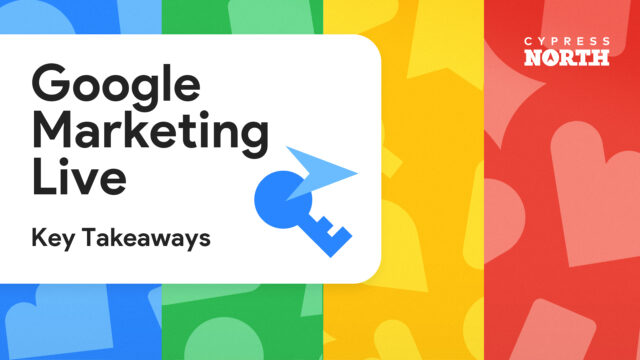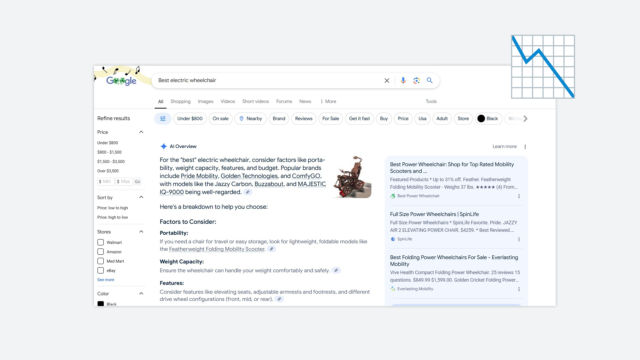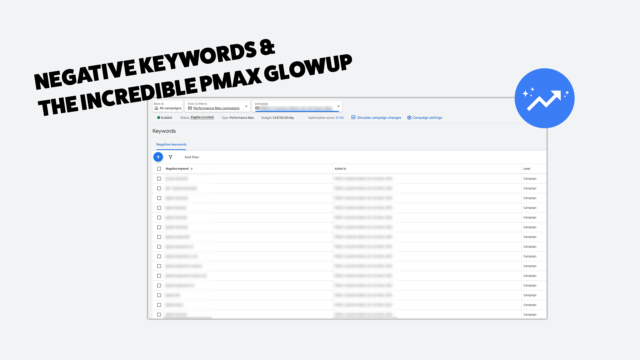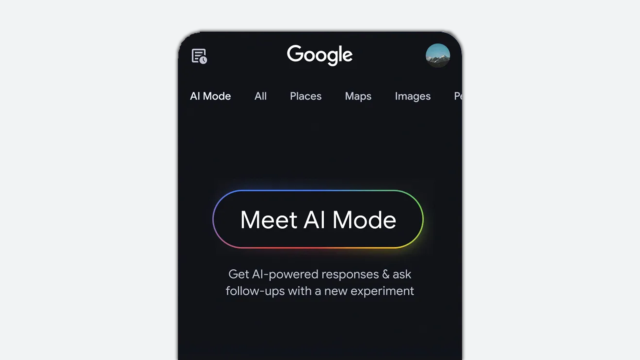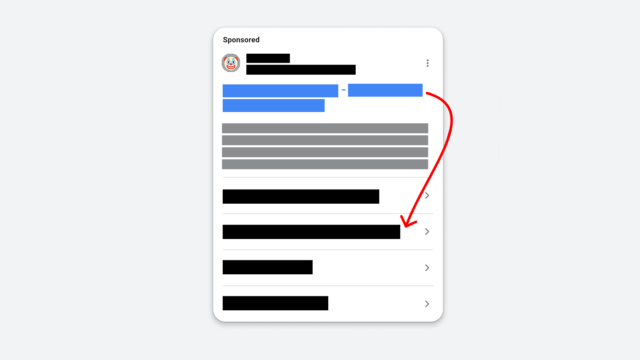How to target Google Ads search campaigns to specific audiences [Guide & Full List]

In 2019 (to the delight of the digital marketing community) Google announced that marketers would now be able to apply four different audience formats to their search campaigns at the ad group or campaign level:
- in-market audiences
- affinity audiences
- seasonal event segments
- combined audineces
You’ve probably used audiences in your display campaigns to narrow your targeting, but combining them with keywords in a search campaigns is uncharted, powerful territory. Not only are you able to exclusively target a particular audience, you can also exclude an irrelevant audience entirely, ensuring extraneous users never see your ads and you won’t ever pay for their clicks.
In this post, we’re going to dive deep audience targeting for search campaigns, covering:
Audience Types
1. What affinity audiences are
2. What in-market audiences are
3. What seasonal event segments are
4. What combined audiences are
Execution & Targeting
4. The difference between observing, targeting, and excluding audiences
5. How to target, observe, or exclude audiences in a campaign or ad group
Pro Tips & Resources
6. Critical tips for successful audience targeting
7. Strategies for search campaign audience targeting
8. The complete lists of in-market audiences and affinity audiences available in Google ads
Audience Types
What Are Affinity Audiences?
Affinity audiences allow you to target your ads to users who are passionate about a specific topic or area of interest. Based on their behavior as they browse the internet, Google has determined that users in a particular affinity audience have a heightened, lasting interest in that category.
This is not a new type of audience, what is new is the ability to layer affinity audiences with campaign keywords to target users who have a heightened interest in that category and are searching for it online.
For example, let’s pretend you work for a cosmetics company with a new, high-end lipstick brand. By layering the “beauty maven” affinity audience with relevant, lipstick-related keywords, you are specifying that your ads will show not only to people who are searching for lipstick online, but who are also passionate about beauty products in general. These users might be more inclined to buy expensive cosmetics products and may be more likely to turn into repeat customers.
What Are In-Market Audiences?
In-market audiences are similar to affinity audiences in that they allow you to target users based on their interests, determined by their behavior online. The key difference is that in-market audiences also take into account where a user is on their purchasing journey. This audience type finds users who are actively researching a certain topic or product online, allowing you to target the right person at the right time. By looking at user behavior such as search queries, the sites they’ve visited, and what they’ve clicked on, Google has determined that these users have a high intent to purchase the product in that particular category.
For example, if someone is searching for “2017 Mini Cooper” and looking at relevant content (such as price comparisons and reviews) for compact vehicles on used car sites, Google would identify these behaviors and put them in the “Used Compact Cars” in-market audience.
What are seasonal event segments?
Seasonal event segments are a new type of in-market audience specifically designed for specific holiday shopping seasons. Layering this targeting with your product-based keywords, you’ll be able to tailor your messaging specifically for holiday shoppers or raise bids for these audiences.
The seasonal event segment categories are:
- Back-to-school shopping
- Black Friday shopping
- Christmas shopping
- Monther's day shopping
What are combined audiences?
Using combined audiences, advertisers can combine in-market, affinity, demographic, and remarketing audiences using "AND", "OR", or "NOT" directives.
The "NOT" qualifier works the same as excluding audiences from campaigns and the "OR" qualifier works the same as adding multiple audiences to your campaign. However, if you want your campaign to exclusively target users who are in two distinct audiences, creating a combined audience with the "AND" qualifier is the only way to achieve this.
You can build out combined audiences right from the audience tab in your campaigns (covered later in this post).

In the example above, a retailer wanted to target users who visited their website, didn't convert, and are interested in Black Friday deals. This would allow them to tailor their messaging for Black Friday promotions and users who are already familiar with the brand.
The other advantage of combined audiences is that they are saved and can be applied to multiple campaigns.
Want to see all the search audiences? You’re in luck! We have a PDF with every possible in-market and affinity audience for you at the end of this post.
Execution & Targeting
Observation Vs. Targeting
When you apply an audience to a campaign, you are prompted to select a targeting setting. The targeting setting options?
- Targeting
- Observation
This is already super confusing, I know. Google should really work on some of their naming conventions! Please bear with me as I say “targeting” a million times in this section. Just know that when I say “targeting setting” I am speaking about these two options. When I say “targeting” I’m referring to that specific setting option.
You can see Google’s definitions of these targeting options in the screenshot above, but I’ve seen even PPC veterans get tripped up on how these options differ. I’ll do my best to spell it out below.
Targeting: by applying the "targeting" targeting setting to your audience, you ensure that Google will only show your ads to users in that audience. You are telling Google to target that audience exclusively.
In search campaigns, your keywords add another layer of targeting. If someone who is in your targeted audience searches a query that matches your keywords, your ad will be placed in that auction and they may see your ad. But, If a user who is not in your targeted audience searches a query that matches your keywords, your ads will not be included in that auction and they will never see your ad.
Observation: When you apply the "observation" targeting setting, you’re not targeting this audience exclusively. Your ads will be eligible to show to any users whose query matches your keywords. However, you can add bid adjustments to raise or lower your bids on any audience you add to a campaign with the observation setting.
The only way to see campaign performance broken out by audiences is by adding audiences to your campaign, whether you target or observe them. By applying audiences with the observation setting, you’ll be able to see how much these users see, click, or convert on your ads. This cannot be viewed retroactively, so if you want to use any of these learnings to make audience decisions (should I create a new campaign that targets this audience exclusively? Should I raise bids for this audience? Should I exclude this audience entirely?) you’ll have to observe it first and wait for the data to collect.
Basically, if you want to
- Apply a bid adjustment to an audience
- See how a particular audience interacts with your campaign
WITHOUT excluding any users, the observation setting is the way to go.
Here’s an example of these settings at work in live campaigns
In the example below, we found a relevant in-market audience (which we’ve hidden to protect our client’s privacy) and applied it with the observation setting. After we saw a lower CPA and higher conversion rate from users in this audience, we decided to add a 50% bid adjustment.

Notice that when you look at the data for that audience vs. the total campaign, our ads are still serving to users who are not in this audience. Now, compare the previous screenshot to the one below. We applied the same in-market audience with the targeting setting set to targeting.
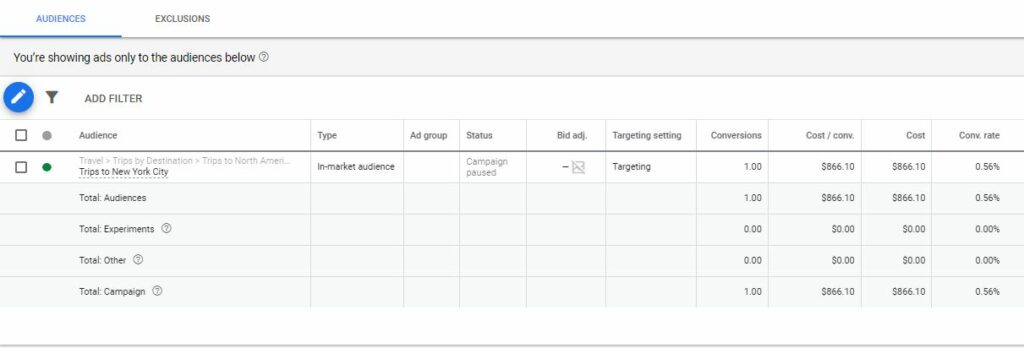
The data for clicks, cost, conversions, and all other KPI’s for the total campaign are all exactly the same as they are for the audience because it is targeted exclusively. No one outside of this audience saw our ads.
Exclusion: Add an audience to your exclusions list to ensure those users never see your ads and you never pay for their clicks. If you’re having trouble matching the right user intent with keywords alone, excluding audiences can be a powerful tool.
Add An Audience To Your Search Campaign
Now that you understand the different targeting options, let’s walk through how to observe or target an audience. The process is super simple!
1. Select your campaign and navigate to the Audiences tab
2. Click either “Add Audiences” or the blue pencil on the top left corner
3. Specify whether you want to apply your audience at the campaign or ad group level
4. Select “Targeting” or “Observation” to specify your targeting option
5. In the box below, select the type of audience you’d like to add. OR if you’ve already looked at our full list of audiences at the end of this post, simply search the in-market or affinity audience category you’d like to add.
6. When you’ve found your desired audience, click the blue checkbox next to it. You’ll see all the audiences you’ve added on the right side of the box. When all of your audiences have been selected, hit save.
7. Now, you can apply negative or positive bid adjustments to certain audiences by hovering over the existing bid adjustment to edit it.
And that’s it! Now let's learn how to exclude irrelevant audiences.
Exclude an Audience From Your Search Campaign
1. Select your campaign and navigate to the Audiences tab
2. At the top of the page, select “Exclusions”
3. Specify whether you want to exclude your audience at the campaign or ad group level
4. In the box below, either search for the audience name or browse categories to find the audience you’d like to exclude
5. When you select an audience, you’ll see it added to the list on the right side. When you’ve selected all the audiences you want excluded, hit save.
Pro Tips & Resources
There are 4 crucial things to keep in mind when adding audiences to campaigns or ad groups.
1. Choose to target at the ad group or campaign level
Audiences can be applied at the campaign or ad group level, however all audiences in one campaign must be applied at the same level. If you have a remarketing, in-market, or affinity audience at the ad-group level, you won’t be able to add audiences at the campaign level.
2. Targeting settings must be uniform across a particular campaign or ad group.
You cannot target one audience and observe another. If you try to outsmart Google by targeting a broad in-market audience and observing the subcategory in-market audiences within it (and trust me, I have!) Google will change all of the audiences to observation.
3. Beware of Google Ads Editor!
I’ve found it to be pretty useless when it comes to adding audiences to campaigns. When I’ve tried to add audiences and set them to observation, it overrides my settings and switches to targeting. I've also tried to copy and paste observation audiences from one campaign to another, but when I paste it overrides my targeting setting. For now, this is something you’ll just have to do online.
4. Start observing audiences right now!
In my opinion, There’s really no reason not to add some relevant audiences to your search campaign with the observation setting to see how often they convert. Unlike other platforms, we can’t see how audiences interact with our campaigns unless we target or observe them. Based on the data you collect over time, you may decide to add a bid adjustment to that audience or target it exclusively.
Strategies
Let’s talk a bit about strategies you can use combining keywords, audiences, and targeting settings to uncover new leads. All of these ideas should be tested with caution as results may differ greatly depending on your products, keywords, and audiences used.
1. Use the targeting setting with generic keywords.
Because you know your ads will only show users who are interested in a particular topic, consider using less-specific keywords (even terms that haven’t converted in the past!) with targeted audiences.
Example: Let’s say you run an art museum in Washington D.C. In the past, you may have only wanted to target people who are currently located in D.C. or queries that include the term “D.C.” to avoid paying for clicks from people who aren’t visiting the area. But, if you target the “Trips by destination, Washington D.C.” audience, you can feel more confident targeting less-specific queries, such as “best art museums”, because everyone who is looking at your ad is planning a trip to the area.
2. Change your messaging for users who are looking for holiday gifts
Create a separate campaign targeting Christmas shoppers with the appropriate seasonal event segment audience. Now you’ll be able to write ad copy specifically for users looking to buy gifts.
3. Negative keywords not cutting it? Exclude irrelevant audiences.
Let’s say you manage Google Ads for a software as a service company with the brand name "Blush". Your branded campaign keeps getting clicks from people searching for makeup products, creating a need for you to constantly add negative terms. To combat this, you could bid down on the “beauty mavens” affinity audience or exclude it entirely. This should limit the number of clicks you receive from people looking for makeup.
4. Give the best-performing audiences their own budget
If one audience in particular converts at a higher rate in your campaign, you could keep the audiences as observation and add a positive bid adjustment. Another strategy I encourage you to test is to break out that audience into its own campaign. Then, it'll have its own, dedicated budget specifically for users who are more likely to convert. If you try this, don't forget to exclude that audience from the original campaign so you're not bidding against yourself!
Download the Complete Lists of In-Market Audiences and Affinity Audiences
Now that you know what in-market and affinity audiences are, the intricacies of targeting settings, how to add or exclude audiences, and secrets to audience-targeting success, download the full lists of search audiences to see if any align what you are advertising!
Have used audience targeting in your search campaigns? Share your experience and any insights in the comments!
Meet the Author

Christine Zirnheld
Christine is our Director of Lead Gen and a co-host on our weekly Marketing O’Clock podcast. Known affectionately among coworkers and podcast listeners as Shep, she joined Cypress North in 2018 and works out of our Buffalo office.
As Director of Lead Gen, Christine oversees all of our lead generation clients, providing strategic guidance and assistance as needed to ensure we’re hitting their goals. She is on the cutting edge of paid search strategy and uses her expertise to not only uncover more quality leads for clients, but to turn those leads into customers.
Christine is an established thought leader in the digital marketing community, known for her PPC expertise and strategic mindset. She was recognized as one of the Top 50 Most Influential PPC Experts of 2025 by PPC Survey. Christine has shared her insights as a speaker at several major digital marketing conferences, including SMX Advanced in Boston, SMX London, and SMX Next. She has contributed to Search Engine Journal and Search Engine Land, and even published an ultimate playbook for Google Ads.
Originally from Ashburn, Virginia, Christine graduated from Canisius University with a bachelor's degree in marketing. She also has an associate's degree in fashion business management from the Fashion Institute of Technology.
When she’s not working, Christine can be found singing karaoke or watching Miss Rachel with her toddlers, watching Bravo, dining al fresco, and drinking Diet Coke. She’s known for making her Taylor Swift fandom her personality, talking about the royal family to any of her coworkers who will listen, and reading books about wives who kill their husbands. Christine was the 2002 Hula Hoop Champion at Ashburn Elementary School – and may still be undefeated.


